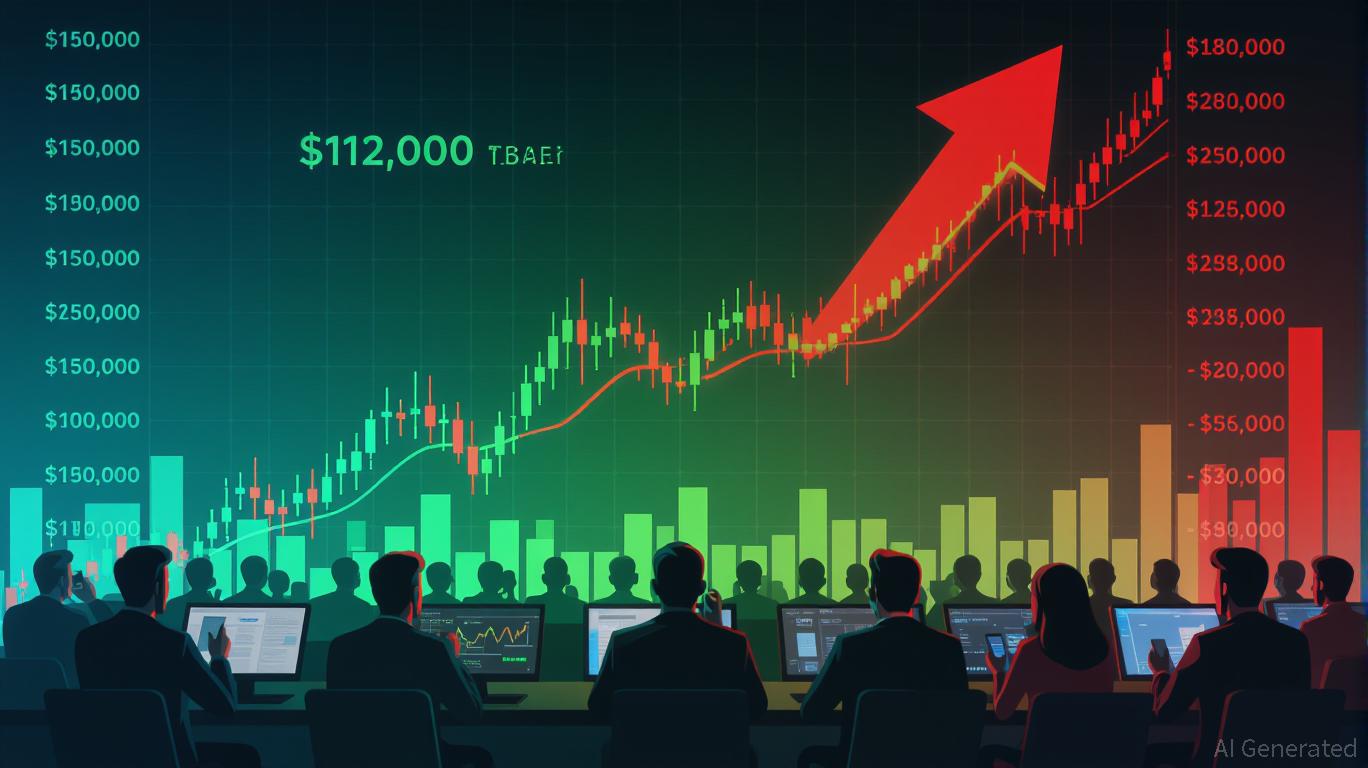Bitcoin’s Steep Drop: An Ideal Combination of Economic Headwinds and Systemic Threats
- Bitcoin's 30% plunge from its October 2025 peak exposed systemic risks amid Fed's restrictive policy and 3% inflation persistence. - $1.27B in leveraged liquidations and CFTC's spot trading plans amplified volatility, linking crypto risks to traditional finance. - Institutional buyers like MSTR continued aggressive BTC accumulation, raising questions about market distortion during crises. - Investors must monitor Fed policy shifts, regulatory clarity, and leverage management as crypto's systemic vulnerab
Macroeconomic Headwinds: The Fed’s Firm Stance and Persistent Inflation
The Federal Reserve’s steadfast approach to maintaining a “somewhat restrictive” monetary policy has cast a persistent shadow over riskier assets, including
At the same time, escalating global trade disputes, especially between the U.S. and China, have injected further instability. While companies may have temporarily absorbed some tariff-related expenses, as
Systemic Risks: Leverage, Regulation, and Chain Reactions
The 2025 downturn was not solely the result of macroeconomic trends—it was intensified by internal weaknesses within the crypto sector. In November, a
Regulatory developments added to the volatility.

Institutional Paradox: Stabilizers or Sources of Instability?
Paradoxically, the very institutional investors once seen as bringing stability to crypto are now raising alarms. Strategy (MSTR), for example, has continued to amass Bitcoin even as prices dropped,
The Road Ahead: Adapting to a Changed Landscape
For those investing in crypto, the takeaway is unmistakable: systemic risks are now a reality, not just a theory. The combination of leverage, regulatory shifts, and macroeconomic cycles has created a highly unstable environment. Key areas to monitor include:
1. Federal Reserve Policy: Even a suggestion of rate reductions could trigger a brief rally, but underlying risks will remain until inflation is decisively managed.
2. Regulatory Developments: The CFTC’s leveraged trading proposals could either inject much-needed institutional capital or further destabilize the market.
3. Managing Leverage: Both individual and institutional investors must employ sophisticated risk management tools, from derivatives hedging to
Conclusion: Urging Prudence and Transparency
The Bitcoin crash of 2025 serves as a stark reminder. The issue extends beyond price declines—it’s about the underlying weaknesses in the system. As economic pressures persist and regulatory landscapes shift, the crypto sector must confront a fundamental question: Is it merely a speculative vehicle, a hedge, or something different altogether? For now, the answer is uncertain. But one thing is clear: ignoring systemic risks could prove costly for investors.
Disclaimer: The content of this article solely reflects the author's opinion and does not represent the platform in any capacity. This article is not intended to serve as a reference for making investment decisions.
You may also like
Astar (ASTR) Value Soars: Protocol Enhancements and Practical Use Cases Drive Cryptocurrency Growth
- Astar (ASTR) surged 1.95% as protocol upgrades and real-world adoption drive institutional confidence and whale accumulation. - Tokenomics 3.0 shifts to a fixed 10.5B supply by 2026, aligning incentives with deflationary mechanisms and cross-chain interoperability. - Partnerships with Casio, Sony , and Animoca expand ASTR’s utility in loyalty programs and Web3 ecosystems, boosting on-chain activity. - Despite a 24-hour volume of $5.6M, challenges like DeFi TVL declines and liquidity risks remain critical
Aster DEX Experiences Rapid Growth in DeFi Usage: Is This the Dawn of a New Era for Decentralized Finance?
- Aster DEX's hybrid AMM-CEX model and AI-driven liquidity routing drove 2M+ users in Q3 2025, addressing DeFi's slippage challenges. - Transparent tokenomics with public unlock schedules and 5% fee discounts stabilized ASTER's price, reaching $1.13 with $2.27B market cap. - Strategic Binance partnership enabled $3T+ trading volume, while Pro Mode and perpetual contracts expanded token utility beyond governance. - Despite centralization concerns and volatility-related glitches, Aster's crisis response and
Brazil's cryptocurrency rules drive capital inflows as other markets see outflows
- Brazil introduces tax on cross-border crypto transactions, aligning with CARF and OECD standards to close regulatory gaps and boost revenue. - Global crypto funds face $3.2B in outflows, driven by macroeconomic uncertainty and whale selling, contrasting Brazil's $42.8B crypto surge in H1 2025. - Brazil's $1.7T on-chain activity and stricter AML rules position it as a regional crypto oversight benchmark, expanding government visibility into crypto flows. - While U.S. crypto ETFs see $1.97B outflows, Germa

Fed Faces December Decision: Easing Labor Market Pressures or Tightening Inflation
- The Fed faces a December rate cut decision amid internal divisions, with a 50% chance of easing as labor market weakness clashes with inflation risks. - Governor Waller advocates for a 25-basis-point cut to support the slowing jobs market, contrasting with cautious officials like Collins and Jefferson. - Liquidity imbalances push the effective funds rate near the 3.90% excess reserves rate, prompting Treasury bill purchases to stabilize reserves and rates. - Market expectations remain calm, pricing in gr
